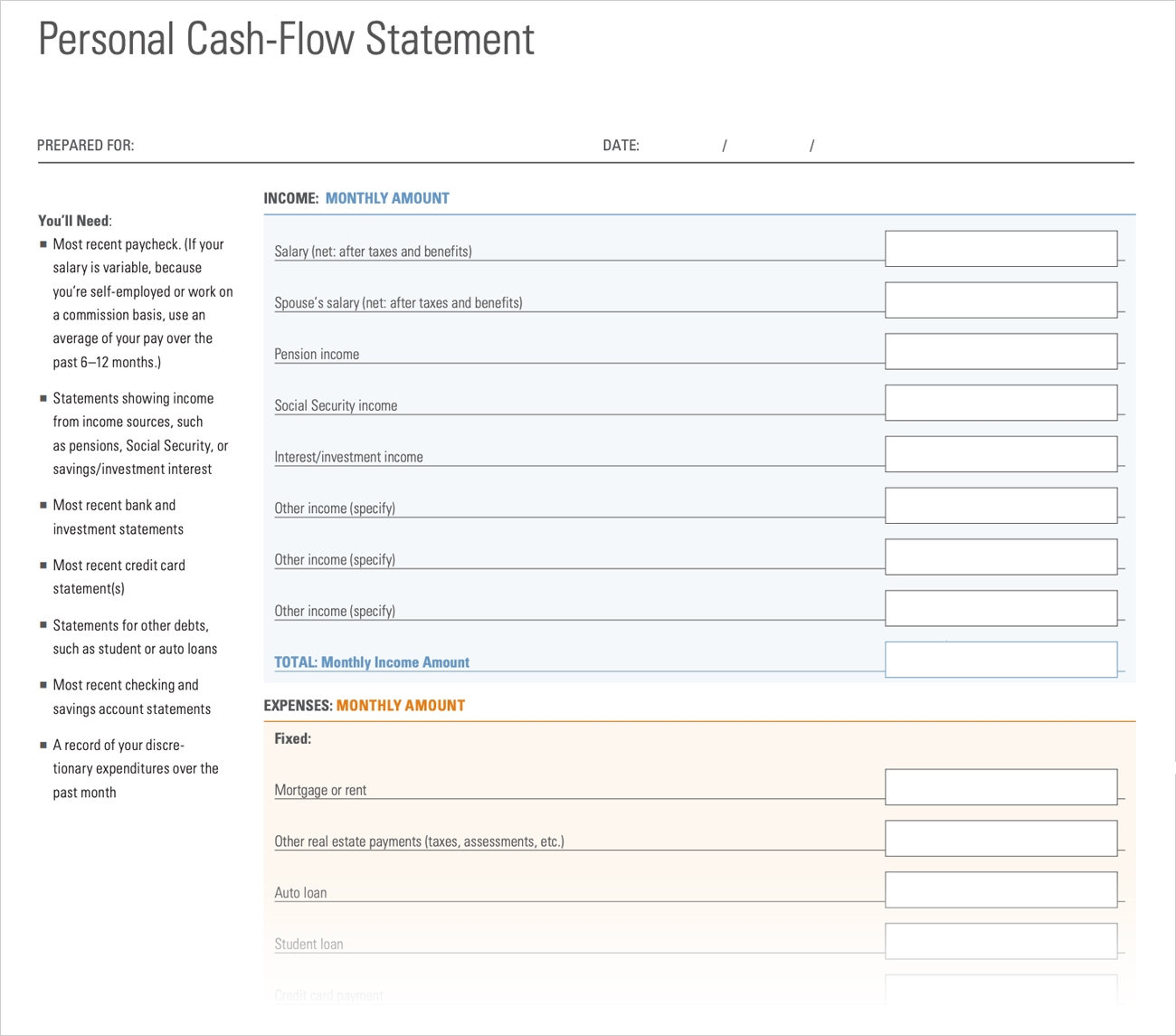Home>Finance>What Is The Difference Between Cash Flow And Profit


Finance
What Is The Difference Between Cash Flow And Profit
Published: December 20, 2023
Learn the difference between cash flow and profit in finance. Understanding these concepts will help you make informed financial decisions.
(Many of the links in this article redirect to a specific reviewed product. Your purchase of these products through affiliate links helps to generate commission for LiveWell, at no extra cost. Learn more)
Table of Contents
Introduction
When it comes to managing finances and analyzing the health of a business, two key factors that are often discussed are cash flow and profit. Both of these concepts play a crucial role in determining the financial stability and success of a company. However, many people often confuse cash flow and profit or use the terms interchangeably, when in fact, they represent distinct aspects of a company’s financial performance.
Cash flow refers to the inflows and outflows of cash in a business over a specific period of time. It represents the actual movement of money in and out of the company, including payments from customers, expenses, investments, and loans. Cash flow is essential for the day-to-day operations of a business, as it ensures that bills can be paid, inventory can be stocked, and employees can be compensated.
On the other hand, profit, also known as net income or earnings, refers to the amount of money a company earns after deducting all expenses from its revenue. Profit is an important indicator of a company’s financial performance and ultimately its ability to generate wealth for its stakeholders. It is calculated by subtracting the total expenses, including operating costs, taxes, and interest payments, from the total revenue generated.
While cash flow and profit may seem similar, they serve different purposes and provide different insights into a company’s financial health. Understanding the differences between these two concepts is essential for effective financial analysis, decision-making, and long-term business planning.
Understanding Cash Flow
Cash flow is a critical aspect of financial management as it reflects the actual movement of money in and out of a business. It provides a clear picture of a company’s liquidity, showing whether it has enough cash on hand to meet its financial obligations. Understanding cash flow is crucial for managing day-to-day operations, paying bills, investing in growth opportunities, and planning for the future.
There are three main components of cash flow:
- Operating Activities: These activities include cash inflows and outflows related to the core operations of the business. Cash inflows can come from sales revenue, while cash outflows are associated with expenses such as salaries, rent, and inventory purchases.
- Investing Activities: These activities involve the buying and selling of long-term assets, such as property, equipment, or securities. Cash inflows from investing activities can occur when assets are sold, while cash outflows happen when assets are purchased.
- Financing Activities: These activities relate to the raising and repayment of capital. Cash inflows from financing activities can come from issuing stocks or obtaining loans, while cash outflows occur when dividends are paid or when the principal amount of a loan is repaid.
Positive cash flow indicates that a company is generating more cash than it is spending and is generally seen as a favorable sign. It allows the business to cover expenses, invest in growth opportunities, and build up reserves for unforeseen circumstances. Negative cash flow, on the other hand, suggests that a company is spending more cash than it is receiving and may need to rely on external sources of funding to stay afloat.
It is important to note that cash flow does not necessarily equate to profitability. A business can have positive cash flow but still experience a net loss if expenses outweigh revenue. Similarly, a company may show a profit on paper but have negative cash flow if there are delays in receiving payments from customers or if there are significant upfront expenses.
Monitoring and managing cash flow is crucial for the financial stability and growth of a business. By forecasting future cash flows, identifying potential cash flow gaps, and implementing strategies to improve cash flow, companies can better navigate economic downturns, manage debt, and allocate resources efficiently.
Understanding Profit
Profit is a fundamental aspect of financial analysis that measures the financial success of a company. It represents the net income or earnings generated by a business after deducting all expenses from its total revenue. Profit is a key indicator of a company’s ability to generate wealth for its stakeholders, including shareholders and owners.
There are different types of profit that businesses consider:
- Gross Profit: Gross profit is the difference between a company’s revenue and the direct costs associated with producing goods or services. It provides insight into how efficiently a business is utilizing its resources to generate income.
- Operating Profit: Operating profit, also known as operating income, is the profit earned from a company’s core operations before taking into account interest, taxes, and other non-operating expenses. It highlights the profitability of a company’s primary business activities.
- Net Profit: Net profit, also referred to as net income, is the final profit figure remaining after deducting all expenses from total revenue, including operating expenses, taxes, interest, and non-operating expenses. Net profit is a key metric to assess the overall financial performance of a company.
Profitability is a crucial aspect of a business, as it indicates the company’s ability to generate income over a given period. It allows businesses to evaluate the returns on their investments, assess the success of their operations, and make informed decisions about future growth strategies.
However, it is important to note that profit does not necessarily equate to cash flow. Profit is a measure of income earned, whereas cash flow represents the actual movement of cash in and out of the company. A company can be showing a profit on paper but experience cash flow issues if it has a high level of accounts receivable or if it has made significant investments in inventory or equipment.
Furthermore, profit measurements can vary depending on accounting practices, industry-specific factors, and company goals. It is important to carefully analyze and interpret profit figures in the context of the industry and company size to gain meaningful insights into a business’s financial health and performance.
Profitability analysis is crucial for businesses as it helps in benchmarking against industry competitors, attracting investors, securing financing, and making strategic decisions regarding pricing, cost control, and resource allocation.
Key Differences Between Cash Flow and Profit
While cash flow and profit are both important indicators of a company’s financial performance, they represent different aspects of a business’s operations and provide distinct insights into its financial health. Here are the key differences between these two concepts:
- Timing: Cash flow focuses on the actual movement of cash in and out of a company over a specific period, while profit represents the financial result after deducting all expenses from revenue. Cash flow provides a real-time view of a company’s financial liquidity, whereas profit reflects the profitability of a business over a set period, usually a year.
- Source of Information: Cash flow is derived from the inflows and outflows of cash in a business, including cash from operating activities, investments, and financing. Profit is calculated by subtracting expenses, including operating costs, interest, taxes, and non-operating expenses, from total revenue.
- Non-Cash Transactions: Cash flow takes into account non-cash transactions, such as depreciation or changes in working capital, which do not directly impact profit. These transactions can have a significant impact on cash flow but may not affect the profitability of a business.
- Long-Term Viability: Cash flow is a crucial factor in determining the long-term viability and sustainability of a business. It ensures that a company has enough cash on hand to meet its financial obligations and invest in growth opportunities. Profitability, on the other hand, assesses a company’s ability to generate income and create value for stakeholders over time.
- Usefulness for Different Stakeholders: Cash flow is essential for day-to-day financial management and is particularly important for creditors, suppliers, and employees who rely on timely payments. Profit is of great interest to shareholders, investors, and potential buyers, as it provides insights into the financial performance and potential returns of a business.
- Accounting Methods: Cash flow is not affected by accounting methods or revenue recognition principles, as it focuses on actual cash transactions. Profit, however, can be influenced by various accounting practices, such as revenue recognition, depreciation methods, and expense allocation.
It is important to analyze both cash flow and profit together to gain a comprehensive understanding of a company’s financial position. A business can be profitable but face cash flow issues if it has significant accounts receivable or large upfront expenses. Conversely, a company can have positive cash flow but show a net loss if expenses outweigh revenue.
By considering both cash flow and profit, businesses can make informed financial decisions, manage their resources effectively, and ensure the long-term success and stability of their operations.
Importance of Cash Flow and Profit
Both cash flow and profit are essential financial metrics that provide valuable insights into the health and performance of a business. Understanding the importance of these metrics is crucial for effective financial management and decision-making. Here are the key reasons why cash flow and profit are important:
Importance of Cash Flow:
- Operational Stability: Cash flow ensures that a business has sufficient funds to cover operational expenses, pay suppliers, meet payroll obligations, and invest in growth opportunities. It helps maintain stability and continuity in day-to-day operations.
- Managing Debt and Obligations: Cash flow enables a company to manage and repay its debts, loans, and financial obligations in a timely manner. It ensures that interest payments, principal repayments, and other contractual obligations can be met.
- Strategic Decision-making: By analyzing cash flow, businesses can make informed decisions regarding investments, expansion, and resource allocation. It helps identify areas where cash is being tied up and allows for adjustments to optimize cash flow and maximize profitability.
- Emergency Situations: Having a positive cash flow ensures that a business has a financial cushion to cope with unexpected events or economic downturns. It provides the flexibility to navigate through challenging times and withstand unforeseen circumstances.
Importance of Profit:
- Business Performance Assessment: Profitability measures the success of a company’s operations and its ability to generate income. It helps assess the efficiency of the business model, pricing strategies, cost control measures, and overall financial performance.
- Attracting Investors and Securing Financing: Profitability is a key factor that investors consider when evaluating potential investments. It demonstrates the company’s potential for returns and its ability to generate wealth. Profitable businesses are more likely to attract investors and secure financing for growth and expansion.
- Dividends and Shareholder Value: Profitability allows companies to distribute dividends to shareholders, providing a return on their investment. The ability to generate consistent profits enhances shareholder value and attracts long-term investors.
- Business Valuation: Profitability plays a crucial role in determining the value of a business. Potential buyers or investors often examine profitability metrics when assessing the worth of a company during acquisitions, mergers, or selling processes.
Both cash flow and profit are vital for the financial stability, growth, and long-term success of a business. While profit measures the overall financial performance and ability to generate wealth, cash flow ensures the availability of funds to meet financial obligations and sustain day-to-day operations. By effectively managing both metrics, businesses can make informed decisions, maintain stability, and create a solid foundation for future growth.
Examples of Cash Flow and Profit Analysis
Cash flow and profit analysis provide valuable insights into the financial performance and health of a business. Let’s explore some examples of how these metrics can be analyzed and utilized:
Cash Flow Analysis:
One example of cash flow analysis is a company experiencing negative cash flow due to a delay in customer payments. By closely monitoring cash flow, the business identifies that a significant portion of its accounts receivable is outstanding, causing a strain on its cash flow. To address this issue, the company may implement strategies such as incentivizing early payments or tightening credit policies to ensure timely collection of receivables, thus improving cash flow.
Another example is a start-up business that is investing heavily in its growth. While the company may be generating positive cash flow from operations, it is experiencing negative cash flow from investing activities due to substantial capital expenditures. By analyzing the cash flow statement, the business can evaluate the impact of these investments on its liquidity and decide whether adjustments need to be made to optimize cash flow and ensure long-term sustainability.
Profit Analysis:
An example of profit analysis is a company that has achieved significant sales growth but is experiencing declining profitability. By conducting a detailed profit analysis, the business identifies that the increase in sales is accompanied by a surge in production costs, leading to lower profit margins. This analysis helps the company pinpoint cost areas that need to be addressed, such as optimizing the supply chain or negotiating better pricing with suppliers, to improve profitability despite the increase in sales.
Another example is a company that analyzes its profit by product or service line. By comparing the profitability of different offerings, the business can identify which products or services are generating the highest profit margins. This information allows the company to allocate resources strategically, focus on high-profit offerings, and potentially reevaluate or discontinue less profitable ones.
Furthermore, businesses can use both cash flow and profit analysis to assess the financial impact of a major decision. For instance, before scaling up operations or launching a new product, a business can perform a detailed analysis of the projected cash flow and profitability. This analysis helps determine the potential return on investment, the cash flow implications of increased expenses or investments, and the projected impact on the company’s financial performance.
Overall, conducting cash flow and profit analysis allows businesses to gain a comprehensive understanding of their financial performance and identify areas for improvement. By utilizing these analyses, companies can make informed decisions, optimize cash flow, and enhance profitability for sustainable growth.
Conclusion
Cash flow and profit are two crucial metrics that play distinct roles in assessing a company’s financial health and performance. While profit measures the financial success of a business by calculating the net income after deducting expenses from revenue, cash flow focuses on the movement of actual cash in and out of the company. Both metrics provide valuable insights and serve different purposes in financial analysis and decision-making.
Understanding the differences between cash flow and profit is essential for effective financial management. Cash flow ensures that a business has the liquidity to meet its financial obligations, cover operational expenses, and pursue growth opportunities. Profitability, on the other hand, assesses a company’s ability to generate income and create value for stakeholders.
Analyzing cash flow and profit together allows businesses to gain a comprehensive picture of their financial performance. Positive cash flow indicates financial stability and the ability to meet obligations, while profitability showcases the success and potential returns on investments. By effectively managing both metrics, companies can make informed decisions, attract investors, secure financing, and ensure long-term success.
It’s important to note that cash flow and profit are not interchangeable terms. A company can show a profit on paper but experience cash flow issues if it has outstanding accounts receivable or significant upfront expenses. Conversely, a business may have positive cash flow but experience a net loss due to high expenses.
In conclusion, cash flow and profit are fundamental aspects of financial analysis in evaluating the financial health and performance of a business. By understanding their differences, analyzing them together, and utilizing the insights gained, companies can effectively manage their finances, navigate challenges, and position themselves for sustainable growth and success.














